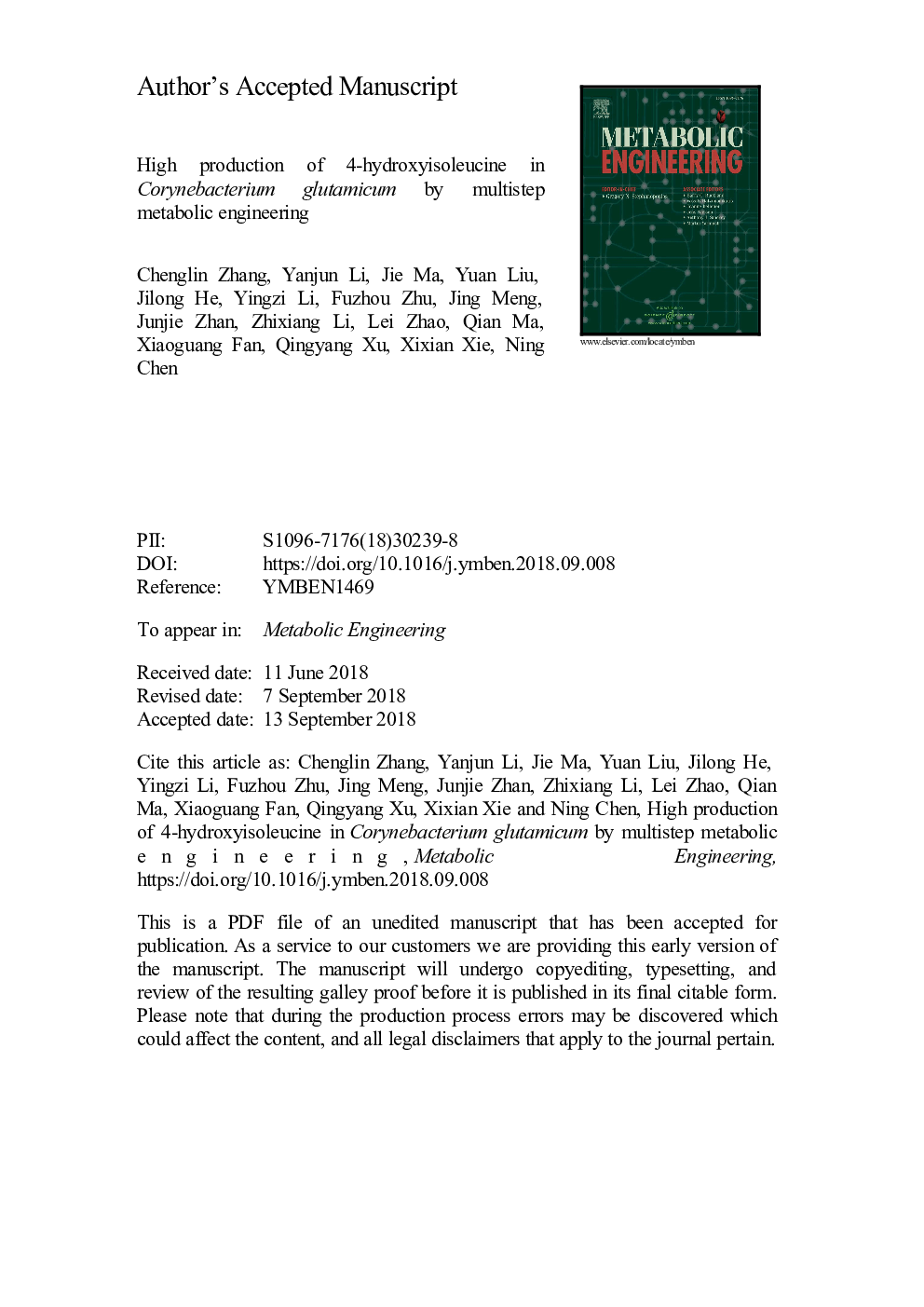| Article ID | Journal | Published Year | Pages | File Type |
|---|---|---|---|---|
| 10999849 | Metabolic Engineering | 2018 | 46 Pages |
Abstract
4-Hydroxyisoleucine (4-HIL) exhibits a unique glucose-dependent insulinotropic activity and is a promising candidate for the treatment of diabetes. Direct fermentation of 4-HIL has been recently studied; however, the expected titre and yield were not achieved. In this study, we initially developed a pathway for the synthesis of 4-HIL in an L-isoleucine producer, C. glutamicum YI, but insufficient supply of α-ketoglutarate was a bottleneck for a strong production. Six genes involved in oxaloacetate and α-ketoglutarate branches were overexpressed or deleted, which increased the production of 4-HIL to 5.12â¯g/L but a considerable amount of L-isoleucine still accumulated in the culture. We then dynamically modulated the activity of the α-ketoglutarate dehydrogenase complex (ODHC) by employing L-isoleucine-responsive transcription or attenuation strategies. The best-engineered strain, HIL18, produced 34.21â¯g/L 4-HIL with a negligible accumulation of byproducts, including approximately 0.6â¯g/L L-isoleucine. This study achieved the highest production and yield of 4-HIL, and optimizing the TCA cycle by dynamically modulating the activity of ODHA can be a powerful strategy to balance the carbon flux and achieve efficient production of α-ketoglutarate and derivatives.
Related Topics
Physical Sciences and Engineering
Chemical Engineering
Bioengineering
Authors
Chenglin Zhang, Yanjun Li, Jie Ma, Yuan Liu, Jilong He, Yingzi Li, Fuzhou Zhu, Jing Meng, Junjie Zhan, Zhixiang Li, Lei Zhao, Qian Ma, Xiaoguang Fan, Qingyang Xu, Xixian Xie, Ning Chen,
